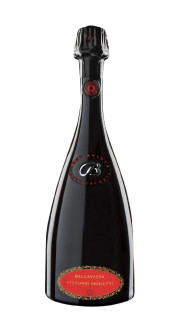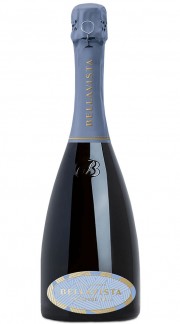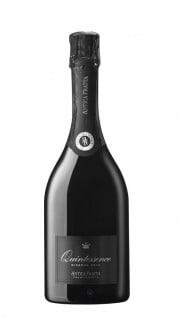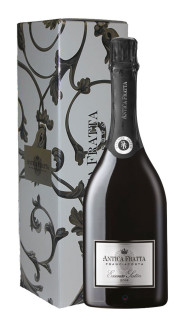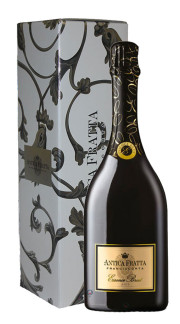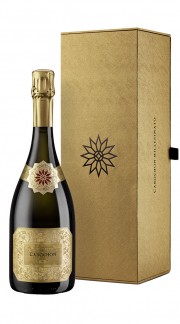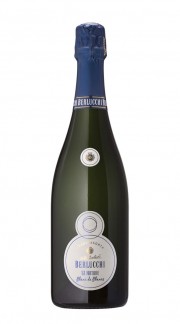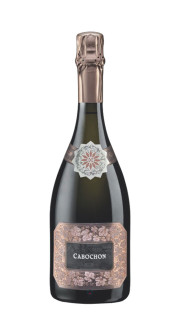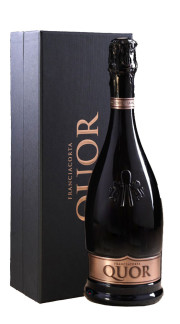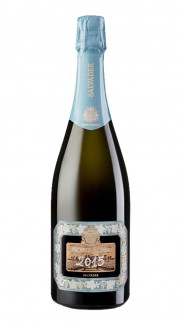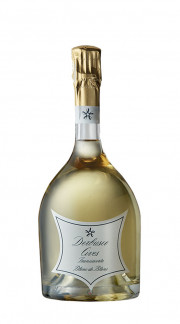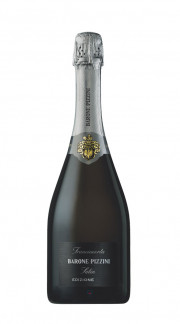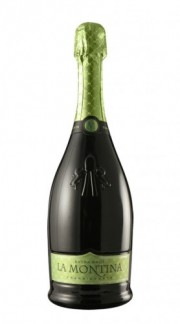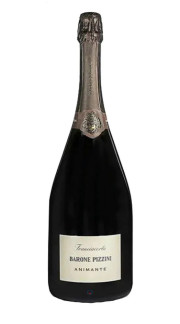- Immediate availability
It lacks to free shipping
Franciacorta
Franciacorta is the classic method or Champenoise sparkling wine par excellence in Italy. The production area of Franciacorta is a small area between Brescia and Bergamo, at the foot of Lake Iseo (from which it benefits from the gentle breezes) born, in terms of sparkling wine, in the 60s. Land and microclimate perfect for growing grapes to make sparkling wine , recalling the French model of Champagne: thus begins the Franciacorta adventure which today has over 120 producers and has reached, after 40 years, qualitative levels of absolute excellence. The question often arises: is a Franciacorta docg or a Champagne better? But the question is misplaced: they are such different products and situations that a comparison cannot be made and, in our opinion, should not be made. They are excellences of such different traditions and territories... However, to you, the tastings and... the arduous sentence!
- € 104,40
- Arriving
€ 46,90- This product is no longer in stock
€ 24,78- This product is no longer in stock
€ 21,52- This product is no longer in stock
€ 21,60
When we talk about Franciacorta , we are located south of Lake Iseo , in the province of Brescia: this is where the great Italian bubbles are born.
Here the cultivation of vines has been practiced since Roman times. This land has a long winemaking vocation certainly favored by its fertility, originating, in turn, from the erosive action produced by the glaciers, with the consequent presence of moraine material (ie material transported and deposited by a glacier). Furthermore, the gravel present in the soil provides a healthy water balance, allowing the roots of the vines to grow optimally, in depth.
The hills dotted with vineyards, the small villages, the monasteries, the noble villas of the 18th century, the museums and the castles complete the enchanting landscape of Franciacorta , where there are also peat bogs , further evidence dating back to the last glaciation.
This land, for many years, has been making itself heard, all over the world, for its precious bubbles and which take the proper name of Franciacorta DOCG. Today the noble bubbles of Franciacorta certainly belong to the small group of wines of excellence in the world, a notable success obtained with stubbornness and seriousness in a relatively short time, just under 50 years. The journey of the Franciacorta producers is a brilliant example of how seriousness and shared passion, with the common goal of developing the entire district, have made it possible to reach very high levels in a short time. However, it should be remembered that the recent vinification style of Franciacorta has no connection with the historic sparkling wines of the past: about 50 years ago, it was a question of introducing the famous Champenoise Method (in Italy, the Classic Method) into the territory. coming from the Champagne region, following the great success of the bubbles from beyond the Alps.
It all began at the end of the 1950s, when a young winemaker, Franco Ziliani , conducted his first experiments in the famous cellars of Guido Berlucchi. In 1958, Ziliani, now considered the putative father of Franciacorta, after long attempts, began to produce interesting sparkling wines with the Champenoise Method, without ever having been to the Champagne region, in France! This singular aspect cannot fail to evoke the memory of Gianluigi Bonelli, noble father of Italian comics and of Tex Willer, who also created, from scratch, a character from the American Far West, without ever having set foot there!
Based on a still wine produced by Guido Berlucchi , Ziliani decides to use Pinot Bianco for his sparkling wine and soon that wine, the sparkling "Pinot della Franciacorta", produced in the "white" and "rosé" versions, will reach an excellent successful throughout Italy. In the 1970s, the fame of this wine convinced other producers in the area to embark on the path of sparkling wine. Thus was born the district of Franciacorta. In 1967, the Controlled Designation of Origin (DOC) arrived, which later became Controlled and Guaranteed Designation of Origin (DOCG).
According to the strict disciplinary of Franciacorta, all sparkling wines are therefore produced according to the Classic method (or Champenoise), furthermore neither the generic term sparkling wine nor references to the production method, such as the Classic method or Traditional method, can be mentioned on the labels. Therefore this sparkling wine must be called, also by law, only and exclusively Franciacorta DOCG, without other definitions.
Franciacorta DOCG can be produced both without a vintage (on the label), and “ Millesimato ” (ie with the date of the harvest on the label), both in the "white" and "rosé" versions; moreover, there is also a Satèn version, a type produced only in this area, characterized by a lower pressure of the bubbles in the bottle. It should be noted that Satèn, obtained exclusively with white berried grapes Chardonnay and Pinot Bianco, is produced only in the Brut version. The production of Franciacorta DOCG begins with the preparation of the base wine, or “ Cuvée ”. There are 3 grapes allowed for production, 2 of which are white berried, Chardonnay and Pinot Bianco, and one is black berried, Pinot Noir. These grapes can enter the composition of the base wine in different percentages depending on the type. The production of the base wine from Pinot Noir grapes is carried out in "white", that is avoiding contact with the skins, while in the "rosé" wines maceration on the skins is carried out, according to the organoleptic qualities desired by the producer. The so-called " liqueur de tirage " is added to the base wine, a mixture of sugars and yeasts with the aim of activating the
second fermentation in the bottle, with the consequent generation of carbon dioxide, i.e. the bubbles. It is curious to know that 4 grams of sugar added to a liter of base wine generates the pressure of 1 atmosphere, therefore the quantity usually used is 24 grams, in order to obtain the traditional pressure (in the bottle) of 6 atmospheres. Franciacorta Satèn escapes this rule, the pressure of which can never exceed 4.5 atmospheres. At the end of the fermentation, the yeasts settle on the wall of the bottle, left in a horizontal position, and the " sur lie " maturation period begins, i.e. on the lees. For Franciacortas without a vintage, the minimum period of aging on the lees is 18 months, whereas for vintage Franciacortas it is 30 months, periods which - generally - are further lengthened in order to give greater complexity and structure to the wine. During this period the yeasts, through a process called autolysis, disintegrate and transfer their aromas and flavors to the wine, thus giving Franciacorta greater complexity and finesse. After the predefined maturation time, it is advisable to remove the yeast sediment from each single bottle. To do this, the bottles are placed, with their necks down, in wooden trestles called " pupitres ", where the patient work of " remuage " begins, the famous operation of shaking and rotating the bottle which will have the purpose of pushing the sediment towards the neck of the bottle, to then be definitively eliminated. At the end of the "remuage", when the bottles assume the vertical position in the pupitres, the sediment is now ready to be removed. At this point, the neck of the single bottle is immersed in a liquid solution, at a temperature of about -20°C, with the aim of rapidly freezing the sediment and therefore solidifying it. The next operation, called " disgorgement " or " dègorgement " , and which allows the elimination of the sediment, consists in uncorking the bottle, facilitated by the internal pressure which will expel the frozen "plug" of exhausted yeasts, also ensuring a loss of wine very limited and leaving the sparkling wine perfectly clear. At this point, the bottles are filled with a particular mixture, called " liqueur d'expedition " (or dosage) which has the further purpose of giving the right "sweetness" to the wine, according to the chosen style. The dosage is generally made up of the wine itself, or even wine aged for a long time, to which sugar is added: a secret recipe for each producer which gives each one the typical style. In relation to the quantity of sugar added to the dosage, the Pas Dosè , Extra Brut , Brut , Extra Dry , Dry , Sec or Demi-Sec types are obtained. At this point, the bottles are closed with the typical cork stopper and the cage, ready for marketing.
Organoleptic characteristics
Franciacorta DOCG can present significantly different characteristics from one typology to another, since the disciplinary leaves wide discretion on the grapes to be used and the relative percentages. In principle, however, the sparkling wine has a bright, light straw-yellow color with bright flashes and possible greenish reflections; very fine, persistent perlage, with rich foam. The scent is intense and includes hints of white fruits, herbaceous notes, but also of bread crust and yeasts. The taste is dry, savory, fine, harmonious.
Pairings and serving temperature
Franciacorta DOCG should be served at a temperature of 6-8°C. As far as the pairing is concerned, we can distinguish the 3 types: White , Rosè , Saten .
The White variety, not vintage, is intended for aperitifs, fish-based opening dishes, delicate first courses, main courses especially based on vegetables or fish.
Franciacorta Rosè is generally more full-bodied and is suitable to accompany savory fish, very savory vegetables and white meats.
Satèn , on the other hand, are perfect for fish salads, fish carpaccio and raw or variously cooked seafood.
